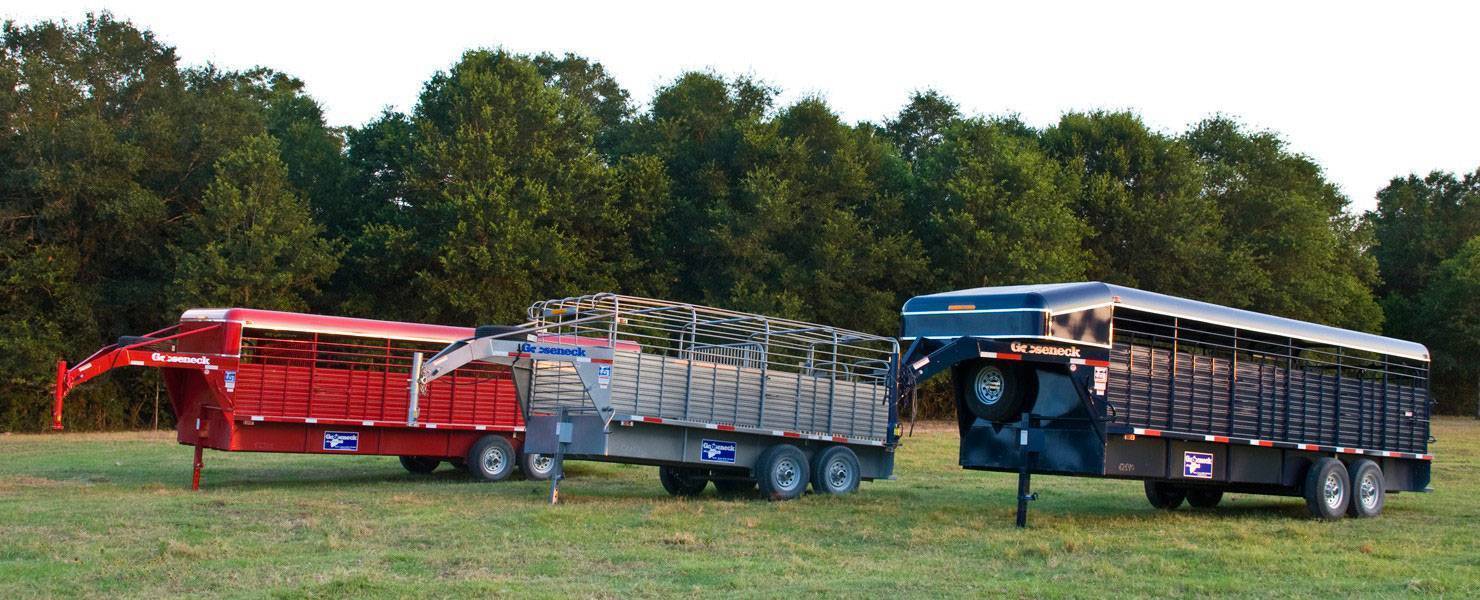A trailer suspension system includes springs or torsion bars and other components that connect the vehicle to its wheels. Suspension is important because if it is weak this can lead to difficulty steering and controlling the vehicle, increased tire and shock wear and other problems.
Safety and Comfort
A combination of heavy loads and weak suspension often leads to difficulty steering and controlling the vehicle, increased tire and shock wear and other problems. This is not only uncomfortable, but it can be damaging and unsafe.
You should weigh your fully loaded tow vehicle and compare the numbers with manufacturer’s ratings, especially if it is riding low, when loaded before investing in suspension modifications. All vehicles are designed for a peak capacity called the gross vehicle weight rating (GVWR). The GVWR is how much weight a vehicle is designed to carry and includes the net weight of the vehicle, plus weight of passengers, fuel, cargo, accessories and hitch or pin weight applied by a trailer. The vehicle’s GVWR is the maximum allowable weight that can be placed on an individual axle determined by the manufacturer.
Using a commercial truck scale, drive the loaded tow vehicle with the trailer onto the platform, first with the front axle, and take a reading. Compare it to the front axle gawr, and then pull forward until both front and rear axles are on the scale. Take a reading and subtract the front axle weight from it. The result will be your rear axle weight. Compare it to the rear gawr. If you use a commercial scale with a multi-segment platform you might be able to get all of these readings at once because the scale records the weights for each segment. The information will then be on the printed data sheet you receive from the weight-master.
Finally, pull both the truck and trailer onto the platform and take a reading and compare the result to the gross combination weight rating (GCWR), which is determined by the manufacturer to the maximum weight of a loaded tow vehicle and its attached loaded trailer.
Components
A trailer suspension system includes springs or torsion bars and shock absorbers, as well as sway bars and other components that connect the vehicle to its wheels. If you intend to get the most from these components, understanding what each of them do is crucial.
The vehicle’s weight is supported by springs (or torsion bars). These springs compress and extend to allow the suspension to flex and react impacts such as bumps. Keeping the vehicle reasonably near or at the stock ride height means you maintain the designed travel before the suspension stop hits the frame and bottoms out, which translates into a smoother ride. The angles of the U-joints and drive shaft(s) change when the ride height of a vehicle is changed from stock, which can lead to issues of wear and vibration. As a result, your should be leveling the vehicle — both side-to-side and front-to-rear.
The “spring rate” is measured in pounds per inch of compression, and it determines how firm the ride is and how much it will sink when weight is added. Springs with a higher rate will not compress as much from a given weight as “lighter” springs. It is critical to note that heavier or “helper” springs do not increase load-carrying capacity and the vehicle’s recommended ratings should never be exceeded.
Leaf Springs
Leaf springs are usually used on the rear (and sometimes front) of heavier trucks, as well as on the front of many lighter four-wheel drives with solid axles. Typically, these springs utilize several layers of metal leaves bound together, so they operate as a unit.
A smoother ride is provided with two-stage leaf packs on the primary stage when the vehicle is unloaded and additional support when the secondary stage is employed. Aftermarket add-on leaves are available that can be bolted onto the existing spring if the vehicle rides slightly too low. Heavier replacement springs are also available. Variations in leaf width, number and thickness tailor the spring to the load.

